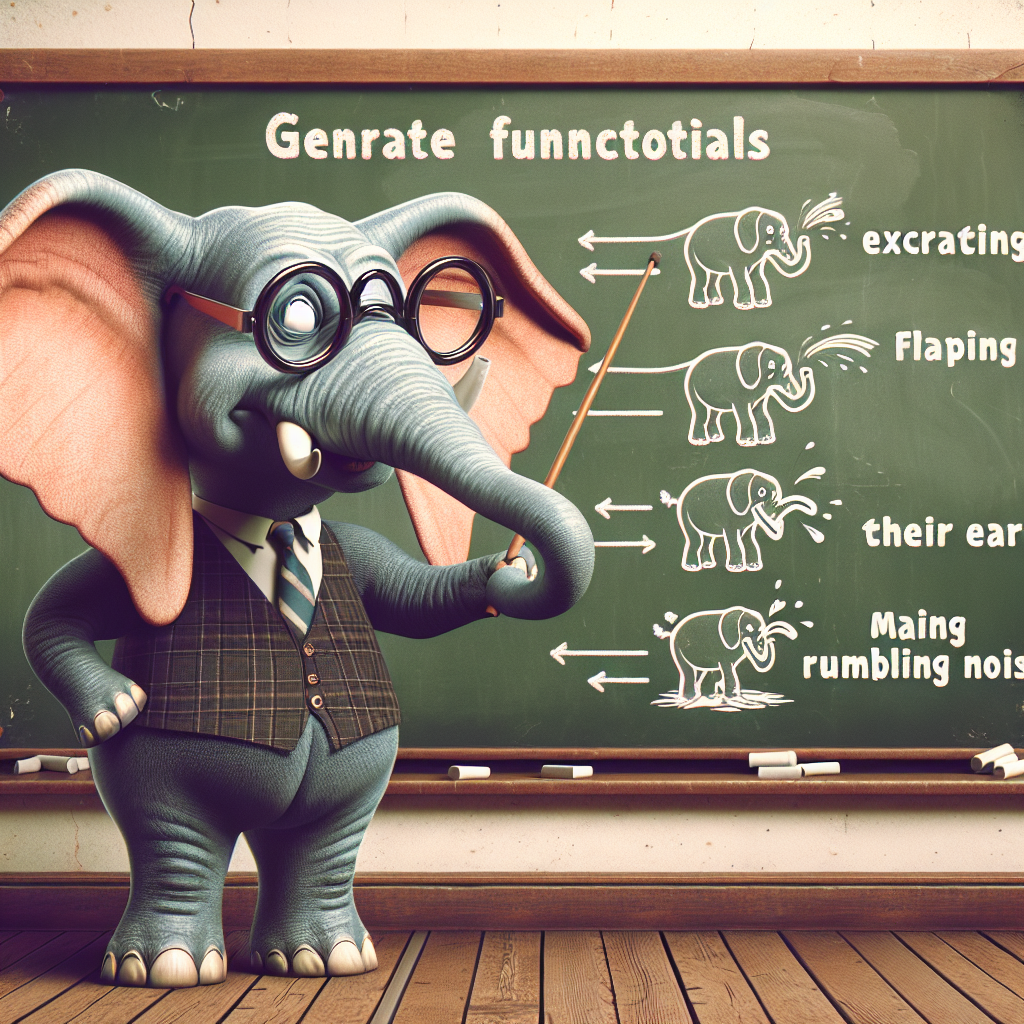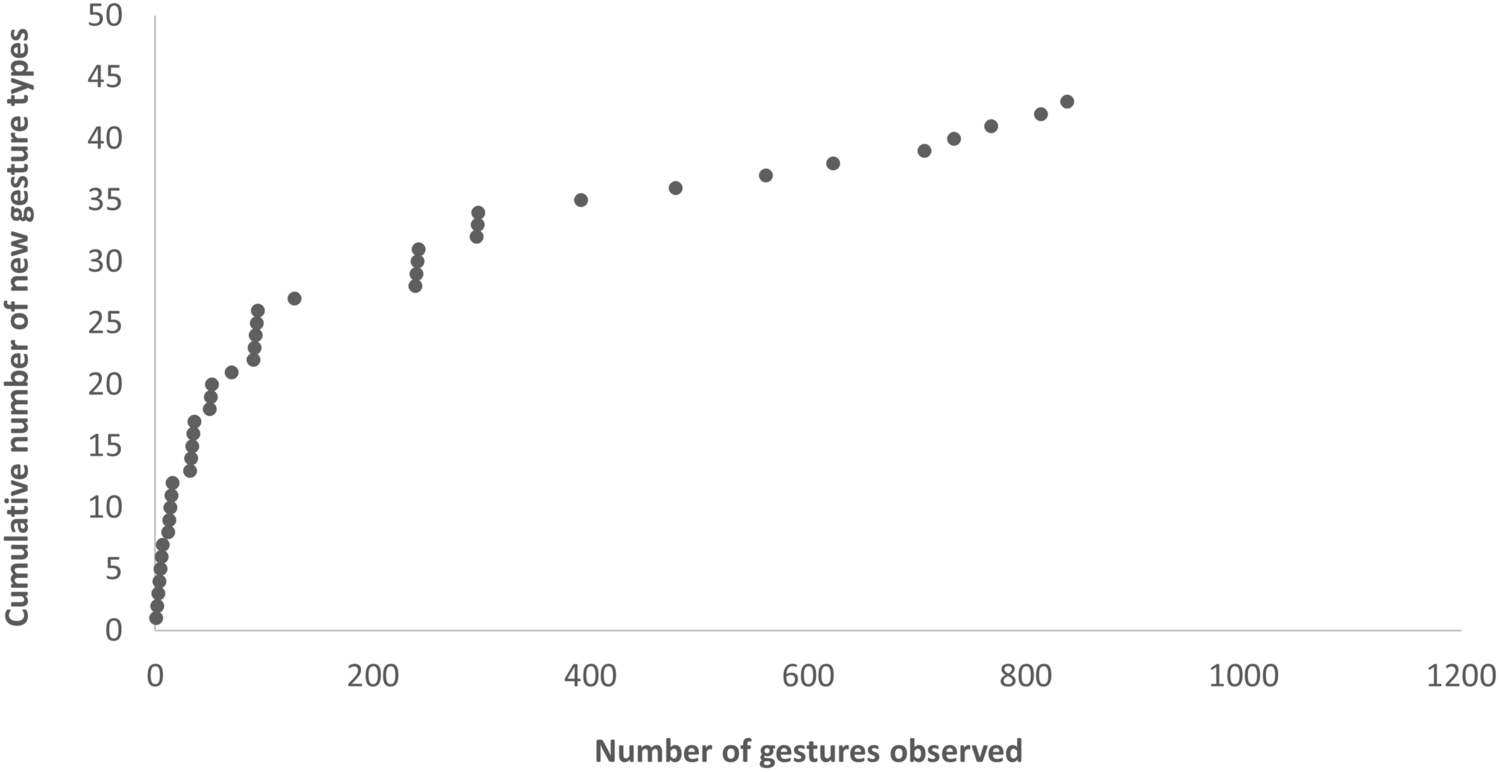You must log in or register to comment.
Summary made by Fabric’s Wisdom Extractor
SUMMARY
Felipe Villa-Larenas, Miquel Llorente, Katja Liebal, and Federica Amici’s study explores gestural communication in wild Geoffroy’s spider monkeys (Ateles geoffroyi), focusing on the use of visual and tactile gestures, the influence of age on gesture use, the intentionality behind gestures, and their effectiveness in communication.
IDEAS:
- Younger spider monkeys prefer tactile gestures over visual ones, contrasting with no age differences in visual gesture use.
- The study’s findings challenge the notion that manual gestures with communicative purposes are unique to great apes.
- Differences in gesture use across ages reflect variations in social activities and physical interactions within the group.
- Vocalizations preceding gestures enhance the likelihood of attention from recipients, indicating a strategic use of multimodal communication.
- The existence of a large and varied gestural repertoire in spider monkeys supports the idea that complex gestural communication is not exclusive to apes.
- Spider monkeys’ gestural communication includes intentional gestures aimed at specific recipients, showing a sophisticated level of social interaction.
- The study underscores the importance of considering the context in which gestures are used to fully understand their meaning and function.
- The observed differences in gesture use based on age and context suggest a degree of social learning and adaptation in spider monkeys’ communication.
- The research highlights the potential of spider monkeys as a model for studying the evolutionary origins and development of gestural communication in primates.
- The findings contribute to the broader understanding of primate communication, suggesting that complex gestural systems have evolved multiple times across different primate lineages.
QUOTES:
- “Gestures play a central role in the communication systems of several animal families, including primates.”
- “Our study provides first evidence of gestural production in a Platyrrhine species.”
- “Younger spider monkeys were more likely than older ones to use tactile gestures.”
- “Using vocalizations right before the gesture increased the probability of gesturing towards attentive recipients and of receiving a response.”
- “Overall, our study confirms this taxon as a valid candidate for research on animal communication.”
- “Repertoire size did not vary with age.”
- “The probability of accounting for recipients’ attentional state was higher for older monkeys than for younger ones, especially for gestures in the visual modality.”
- “In contrast, we found no inter-individual differences in the probability of producing visual gestures.”
- “The study highlights the importance of observational effort and context in understanding gestural communication.”
- “The findings offer valuable insights into the complex social dynamics and communication strategies of spider monkeys.”
FACTS:
- Spider monkeys utilize both visual and tactile gestures for communication.
- The study observed a wild group of 52 Geoffroy’s spider monkeys.
- Researchers identified 43 different gesture types used by the monkeys.
- Tactile gestures are more frequently used by younger individuals.
- The use of vocalizations increases the effectiveness of gestures.
- There’s no significant variation in the repertoire size of gestures with age.
- Spider monkeys account for the attentional state of their recipients, especially in visual communication.
- The study was conducted in the natural protected area of Otoch Ma’ax Yetel Kooh in Yucatan, Mexico.
- The communication system of spider monkeys includes gestures directed towards specific recipients and produced in a goal-directed manner.
- The research on spider monkeys’ gestural communication offers insights into the evolutionary origins of primate communication systems.
REFERENCES:
- Bradbury and Vehrencamp (2011) on different communication modalities among animals.
- Fishbein et al. (2019) on the characteristics of vocal communication systems in primates.
- Call and Tomasello (2007), Cartmill and Maestripieri (2012), Pika and Liebal (2012) on the role of gestures in primate communication.
- Studies of gestural communication in siamangs (Symphalangus syndactylus) by Liebal et al. (2004) and macaques (Macaca spp.) by Gupta and Sinha (2016, 2019), Maestripieri (1996a, b, 1997), and Meunier et al. (2013).
- Freeberg et al. (2012) and Prieur et al. (2020) on aspects of gestural communication like repertoire size and intentionality.
RECOMMENDATIONS:
- Future research should adopt a longitudinal approach to study the development of gestural communication in spider monkeys.
- Studies should consider the context of gesture use to fully understand their function and meaning within primate communication systems.
- Further investigation into the role of multimodal communication strategies, including the use of vocalizations and gestures, is recommended.
- Comparative studies across different primate species can provide deeper insights into the evolutionary origins of gestural communication.
- Research should explore the potential for social learning and adaptation in the development of gestural repertoires among spider monkeys.
- The study of attention-getting behaviors and their impact on the effectiveness of communication offers a promising area for future research.
- Investigating the relationship between physical activities, such as play and social interactions, and the use of tactile gestures could provide valuable insights.
- The influence of demographic factors, such as group size and composition, on gestural communication warrants further exploration.
- The development of a standardized ethogram for spider monkey gestures could facilitate comparative studies and enhance understanding of primate communication.
- Research should aim to identify the specific goals and outcomes associated with different gestures to elucidate their significance in spider monkeys’ social interactions.


